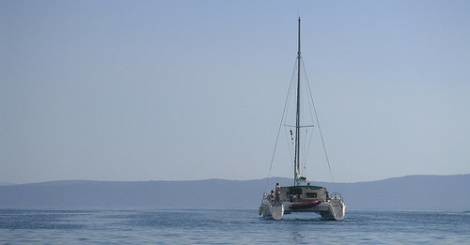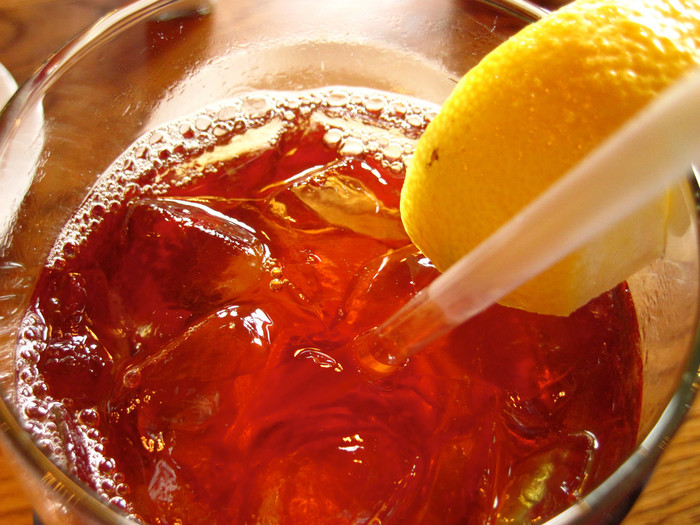
Image by flickr user vacation2Image by catamaran.jpg This isn't the Kekoa, but it will give you an idea of what a sailing catamaran looks like, with its double-hull.
Charleston City Paper has a profile piece on Jamison and Ryan Witbeck, two brothers from Vermont who headed to the Lowcountry to build boats. That's right. They just finished their first catamaran, the Kekoa, after two years of work on the vessel.
Well, technically, boat-building isn't what they do. They run Lost Trades, an adventure travel company that focuses on environmental education. And that's what the boat thing is really about: promoting a more environmentally friendly form of travel.
From Charleston City Paper:
"A conventional fiberglass and foam boat will end up in a landfill in 50 years, whereas a wooden boat, properly sealed with epoxy, could last anywhere from 150 to 200 years," says Ryan. "There are thousands of discretionary travelers that want to reach spectacular places, and they really do care about the way that they get there. What better way to reach these spots than by sailing under 1,100 square feet of canvas?"
As they continue in this endeavor, the brothers hope to pursue more environmentally friendly materials for building their boats. Coast Guard regulations require certain types of wood, and this often means higher environmental impact, such as using old-growth oak trees. City Paper continues:
A big reason the brothers chose catamarans over traditional boats was the ability to use plywood instead of large, old growth planks. Eighty-five percent of Kekoa's wood came from young trees. To demonstrate the potential of further lessening the impact of boat building, they built a prototype canoe alongside the catamaran out of Paulownia, a fast-growing tree native to China that can gain inches in diameter each year. With their leftovers, they're even designing about 50 lightweight wooden surfboards.
Some day, the brothers dream of building a catamaran using the most sustainable woods possible, but they're limited today by industry standards and Coast Guard regulations.
...
The brothers don't disagree, but they plan to continue researching ways of minimizing their impact. For Kekoa, they utilized the lowest VOC (Volatile Organic Compounds) epoxy available on the market, and through efficiency used 100 gallons less than in their previous projects. The pair added the same photovoltaic particles used in solar panels to the paint on the boat's surface, storing energy that creates a soft blue glow across the entire deck at night. Their sanders included vacuum attachments, protecting air quality and enabling them to recycle the dust. And every bit of scaffolding and shop wood was pulled from dumpsters.
Back in February, the Navy Yard at Noisette, where the Witbeck brothers are doing their building, also reported on the project, describing the project and the boat, as well as the brothers attempt at a documentary:
For the current project, the Witbecks decided to record the current project on video for later editing as an historical account of the ship’s construction.
"We’re looking to produce a home-grown documentary," adds Ryan. "We were hoping to produce an Endless Summer style film eight years ago, but documentary producers turned us down. That’s why we’re producing this documentary ourselves."

I have made a good looking boat from the idea that I got from your article for http://www.topbritishessays.com/uk-essay-net-review site that you have shared. I am sure that is going to last longer as you have told which is quite understanding.